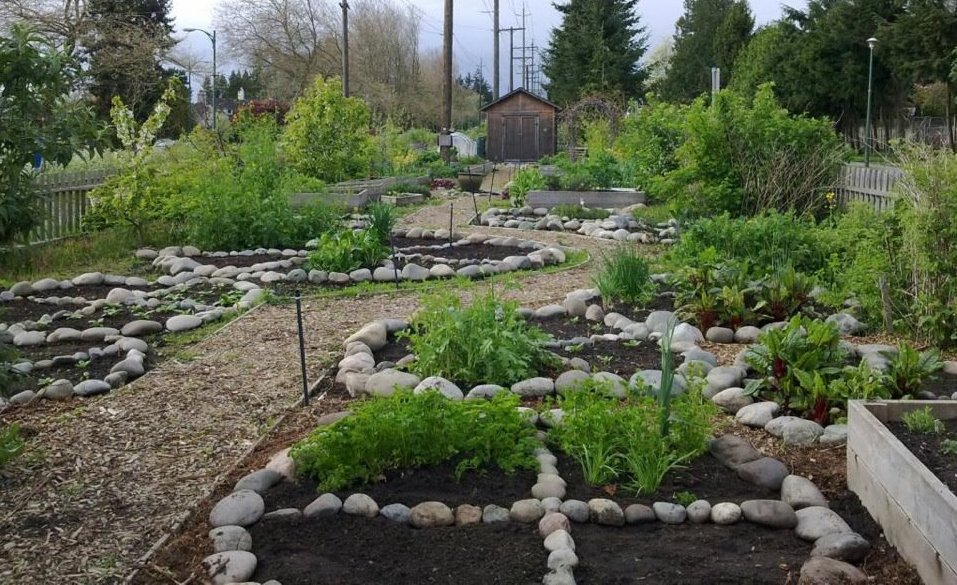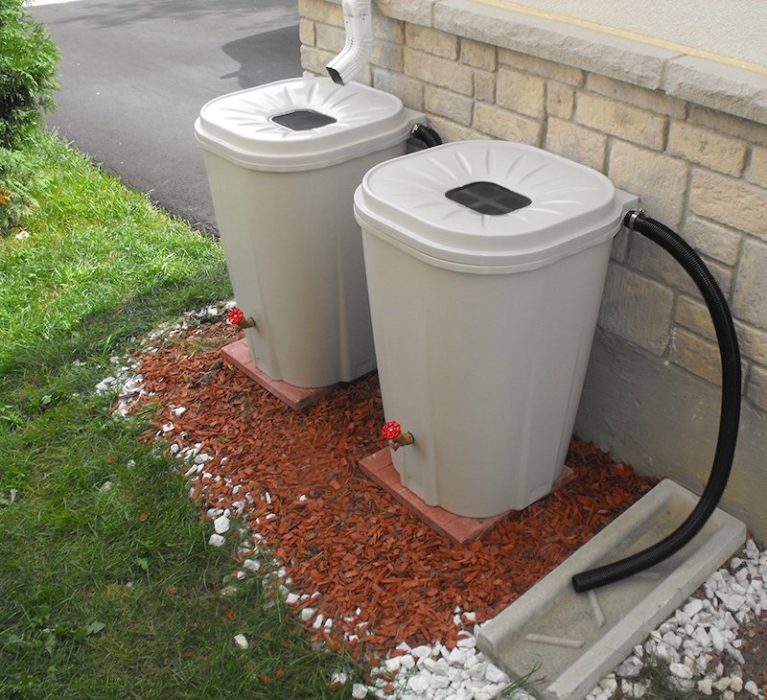Sustainable gardening – one of the most important and effective sustainability practices that we can follow – is the concept of using gardening techniques that cause no harm to the earth and its inhabitants while attempting to actually enhance it. As far back as 1987 the United Nations Brundtland Report on sustainable development defined the movement as,
“… design, construction, operations and maintenance practices that meet the needs of the present without compromising the ability of future generations to meet their own needs.”,
while the American Sustainable Sites Initiative says sustainability seeks to…
“protect, restore and enhance the ability of (gardens) to provide ecosystem services that benefit humans and other organisms.”
By respecting your local eco-system, using native, climate-appropriate plants, shrubs and trees, improving the soils, using reclaimed hardscaping materials, and conserving precious water reserves, you can feed your family fresh, organically-grown produce AND have a gorgeously landscaped backyard garden
Sustainable Garden Design
The best Eco friendly landscaping always starts with a great sustainable garden design.
NOTE: This is seriously the most important step, and skimping on time here will come back to haunt your well-laid garden sustainability plans later.
Successful sustainable gardeners begin their venture by assessing their unique micro-climate and brushing up on the most recent resource-conserving principles and sustainable gardening practices. Their goal from the beginning is to contribute to the earth rather than take away from it.
In sustainable systems, plants are ideally grown without depleting natural resources or contributing to pollution. And, as the word ‘sustainable’ suggests, it should be able to continue for a long time, sustaining itself as much as possible without constant management and manipulation.
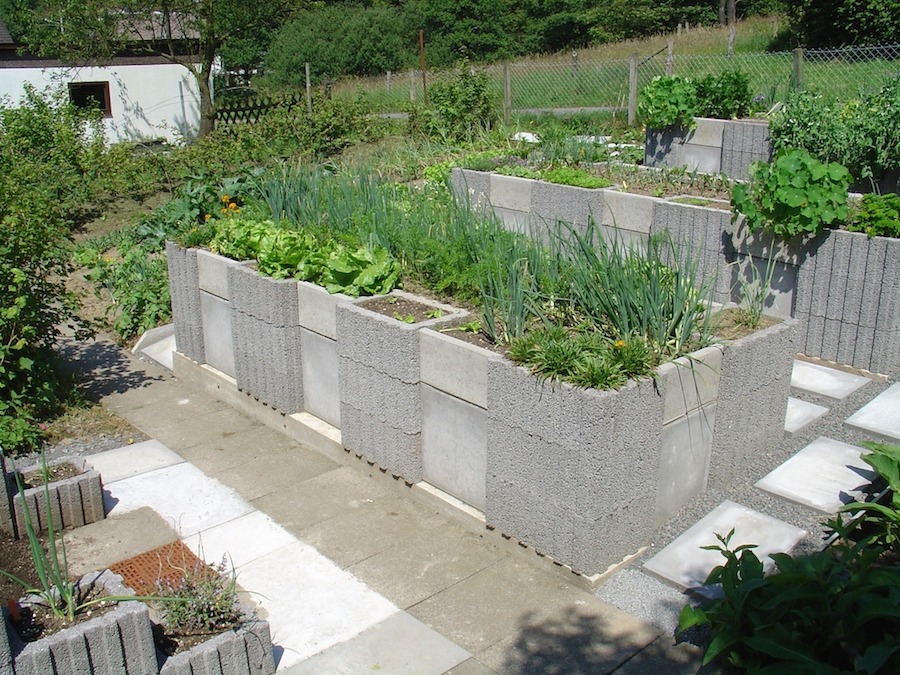
Plant Placement
Self-sustaining garden design considers where plants are best placed.
Sun-loving, taller plants are planted in the part of your yard with the best exposure to light, while shade-loving plants do best in their shadow. Water-loving plants should be placed where water run-off naturally collects, while drought-resistant water friendly plants can be situated in the drier, more arid sections. Climbing plants dig decks, and trailing plants love terraces.
Study Your Subject
Keep in mind that some plants might fall into more than one of these categories. Check out our guide below for quick reference and examples.The more knowledge you have about sustainable gardening at the outset, the better your sustainable garden design will ultimately be.
A weekend spent reading a few books specifically geared toward natural gardening techniques, like:
- 40 Projects for Building Your Backyard Homestead: A Hands-on, Step-by-Step Sustainable-Living Guide
- The Sustainable Vegetable Garden: A Backyard Guide to Healthy Soil and Higher Yields
- Mini Farming: Self-Sufficiency on 1/4 Acre
Reading these will pay off in spades down the road.
Plant Placement Guide
| Type of Plant | Examples | Image | Placement |
|---|---|---|---|
| Sun-Loving/Taller | Bearded Iris (pictured), Daisies, Delphinium, Tomatoes, Beans | 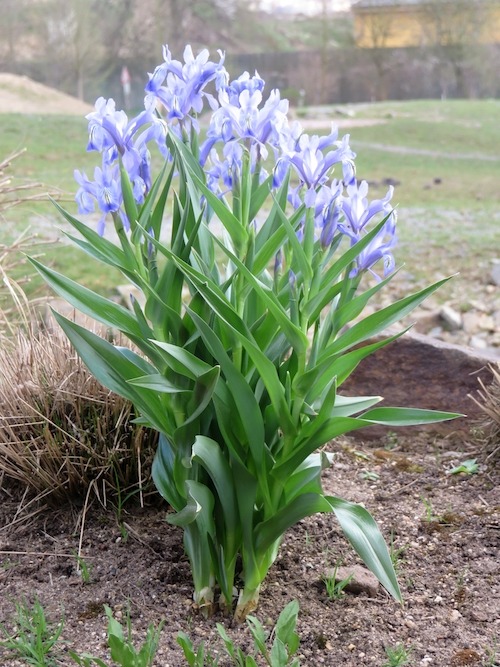 | Track the sun, and plant these in an area that they will get the most sunlight. |
| Shade Loving | Hydrangea (pictured), Lily of the Valley, Geranium, Lettuce, Broccli | 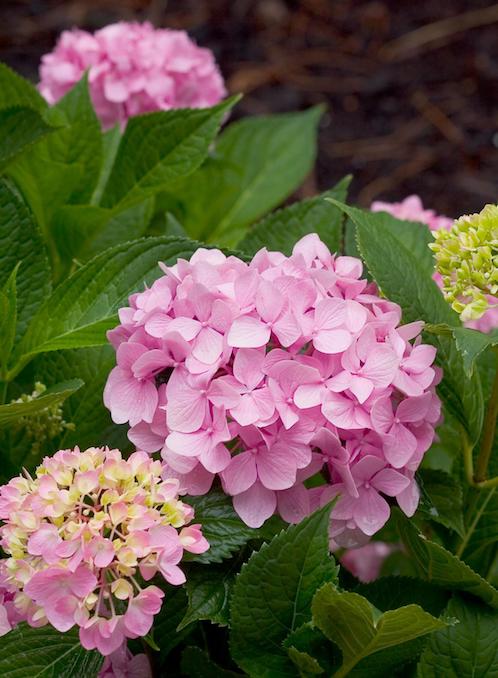 | These plants will grow best with more shade. Plant them in less sunny areas, such as for ground cover under trees. |
| Water Loving | Ferns (pictured), Trillium, Wild Ginger, Marigold | 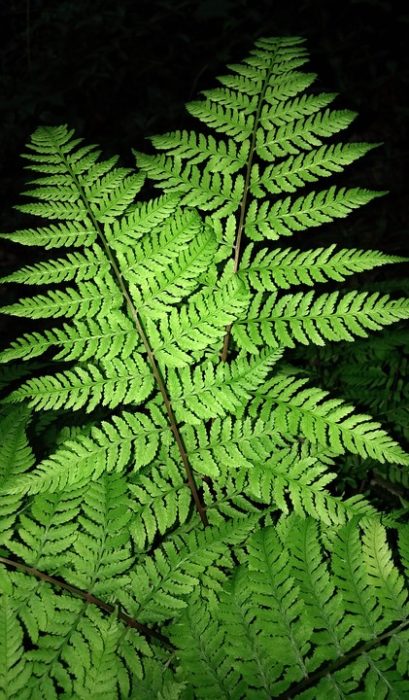 | Put water loving plants where run-off water naturally collects, and where the soil won't dry out quickly. |
| Drought-Tolerant | Verbena, Lantana, Agave, Sage, Poppy (pictured), Echinacea, Cactus, Asparagus, Arugula | 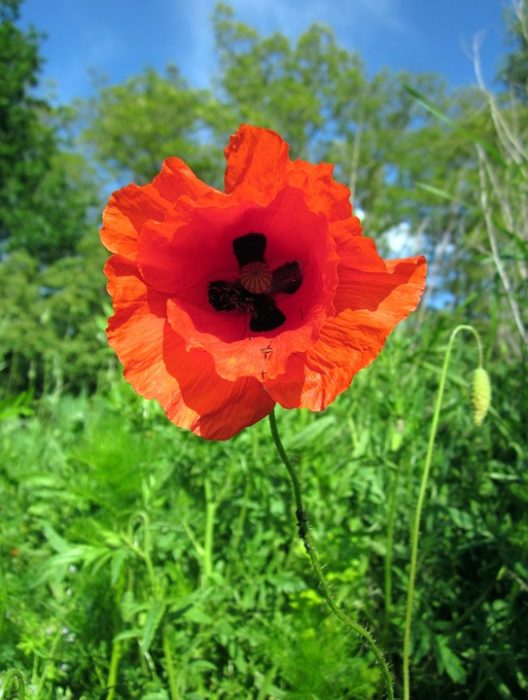 | Situate these plants in the most arid section of your garden. |
| Climbing | Wisteria, Hops (pictured), Honeysuckle, Morning Glory | 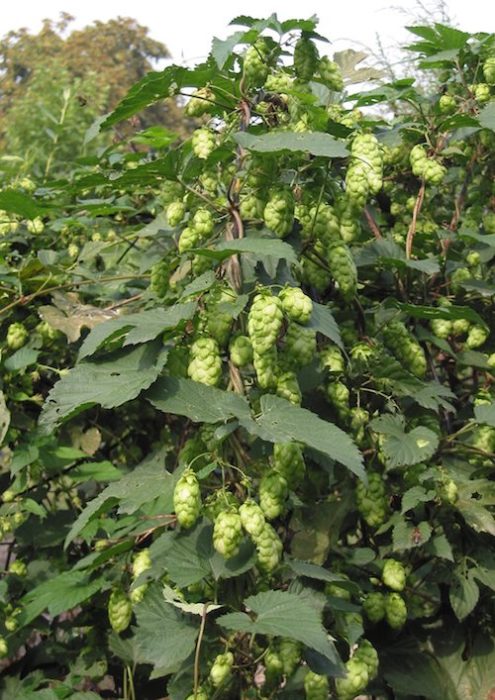 | Climbing plants are great for decks, or archways, to create a natural covering. |
| Trailing | House Ivy, Josephine, Sweet Pea, Jasmine (pictured) | 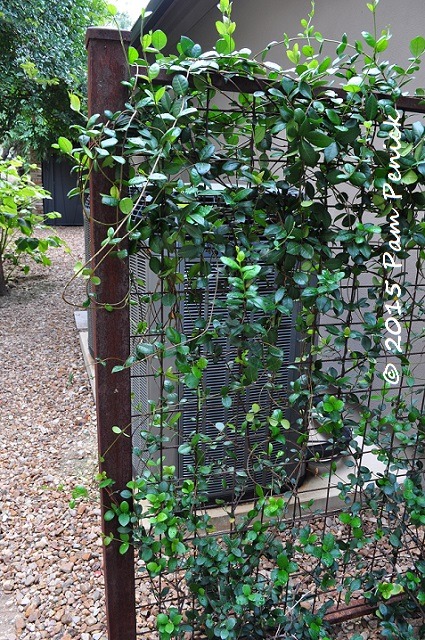 | Trailing plants love trellises or hanging planters. They will grow up, down, and around things. |
Hardscaping
Today’s backyard garden differs wildly from those of years past, where a large central plot of lawn dominated and plants were relegated to borders and edgings with perhaps a tree or two for shade. These days raised beds, hand fashioned trellises and up-cycled fencing furnish our new definition of outdoor living. Lawns are shrinking – or giving way entirely to more useful and climate-appropriate plantings that do not require as much water and maintenance, with crushed granite, gravel or wood mulch paths between.
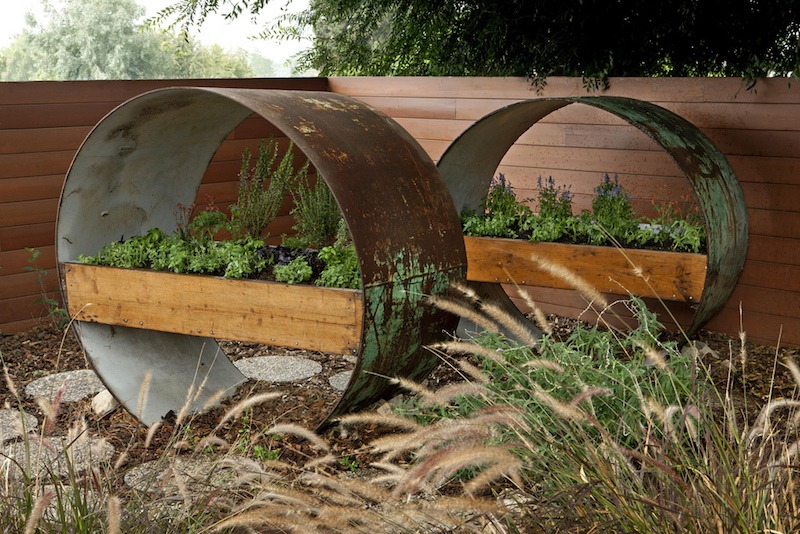
When building walls, walkways, decks, terraces or raised beds, look for recycled, environmentally-friendly building materials like reclaimed concrete chunks, scrap metal, glass bottles, wooden pallets and free quarry waste. Don’t forget to create a space for the all-important composting area. Many gardeners use a 2-bin system, wherein bin #1 is your already broken down materials from last year and bin #2 is the one still ‘cooking’ for next season.
Soil Improvement
After you’ve drawn up your design and laid out your hardscaping, the very first thing you want to do is enrich your soil. Amend your existing earth with compost, fertilizer and mulch to ensure seasons of lush growth.
In the beginning, before you have created a good supply of your own, look through NextDoor.com or Craigslist.com listings for free compost, livestock fertilizers, wood chips, wood ash, straw or bagged leaves to make your soil as luxurious and malleable as possible. This is something you’ll do at least once a year as a prelude to planting. These same sites are excellent resources for any number of up-cycling opportunities.
Grow Native, Climate-Appropriate Plants
The perfect plant for your micro-climate is the one that is native to your local area. Seek out advice from local garden experts (garden clubs and the Grange are good resources) for plants that thrive in your yard’s conditions.
Plant Types
Find plants that will tolerate drought, or high rainfall and seasonal flooding, or high winds – whatever your area’s unique challenges are. When growing vegetables, making sure they are hardy and high-yielding within the parameters of your area’s climatic, prevailing soil and elevation conditions means you will ultimately use less soil additives and supplements, less water, and less effort to see them succeed.
Lawn Control
Limit the size of your lawn, which can use more water and fossil fuels to maintain them than any other planting. Remove it altogether and create a beautiful, natural scape with shrubs, perennials, fruit trees, vegetables, herbs and indigenous flowers, or – if you must – choose a grass species (or a mix) that is right for your climate, and use an electric or human-powered mower rather than gas.
Conserving Water Resources
Water is precious, and needs to be protected for quality as well as preserved. The sustainable garden will utilize rain barrels and collection systems to provide water not taken from municipal or private sources.
Water Quality
Sustainable gardeners also protect water quality by not using herbicides or pesticides that might contaminate it as it seeps back through the soil and into our water supply. Water that drains away or ends up in a storm sewer is wasted.
Protect Runoff
Sustainable gardeners control runoff with permeable soils, using mulch and ground covers to enable their dirt to hold onto water, so it does not evaporate or drain away quickly. Their backyard garden designs utilize terraces, raised beds, and even holding pools to collect rainwater, which allows it to slowly soak back into the soil.
Growing Edible Crops
Growing food and sustainability go hand in hand. Often the desire for ‘a few real tomatoes’ can ignite a home gardening fever that will transform your entire backyard garden into a sustainable nirvana. Nothing beats the taste of produce you’ve grown yourself, inspiring you to healthier eating habits and giving you abundant luscious fruits and veggies to share with your family, friends and neighbors.
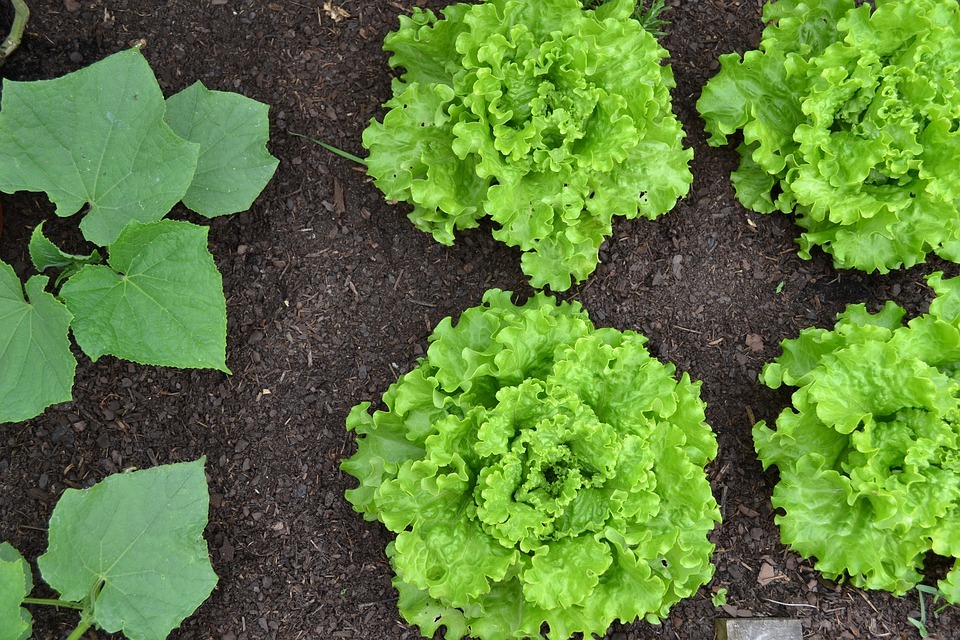
Save Seed
There are few things more rewarding than watching something grow from a tiny seed to full fruit. It fills the body as well as the soul. Harvesting seed from your own fruit and vegetable crops assures you’ll have a good supply of organic, non-GMO seed to make your garden flourish every season. Saving seed is the very heart of sustainability.
Remember that taking the time to establish a great storage and labeling system at the beginning of your harvesting project will reward you in the end, as will arming yourself with the most recent techniques: The Complete Guide to Saving Seeds: 322 Vegetables, Herbs, Fruits, Flowers, Trees, and Shrubs
Sustainable Gardening Checklist
So how can you practice sustainable gardening in your own yard? Check out the additional natural gardening tips below:
[checklist-box title=”Sustainable Checklist” extraTitle=”” extraUrl=””]
- Think about how much maintenance you’re building into your design. Are you making extra work for yourself by choosing plants that require excessive pruning? Must you constantly mow and weed due to overwatering or an over application of fertilizer? Have you designed your space to be less dependent on gas-powered equipment?
- Be mindful of your patch whenever you can. Shred newspaper to make mulch, turn all of your vegetable and fruit peelings and trimmings into compost, and lay recycled cardboard on the ground to naturally stifle weeds rather than turning to herbicides, invite wildlife, pollinators and birds into your yard for a balanced, sustainable garden area.
- Choose your plants wisely by selecting hardy, native plants.
- Feed your soil. Kelp, seaweed, alfalfa and fish meals, and compost feed all the cute little microorganisms in your dirt while encouraging plant growth and lessening pest problems.
- Increase water retention every chance you get. Incorporate compost into your soil at every opportunity – which also lessens soil erosion – and mulch like no one’s watching J
- Contribute to the community in which you live. If you can’t use all the leaves/compost/reclaimed materials/extra plants you’ve collected in your own garden, offer them up on free neighborhood sites like NextDoor or Facebook’s ‘BuyNothing’ community.
[/checklist-box]
Building a Sustainable Community
There’s a ripple effect throughout your community when you buy organic, sustainable products from local businesses (who in turn support the sustainable gardening practices of those they do business with). By encouraging sustainability you’re giving other gardeners inspiration to follow your lead, with the payoff of a better neighborhood, environment and, ultimately, planet.

Sustainable gardening isn’t a particularly difficult thing to do, but it does require a degree of planning and forethought. At the end of the day sustainability is a process, a journey of you will.
Every year brings the opportunity to improve on last season’s efforts, whether it be a redesign of your space, a better water collection system, richer composted soil, or starting your plants from a collection of your own harvested seed.
As all successful gardeners know, if you take good care of your garden, your garden will take good care of you.
![]()
Susanne Robertson is a freelance writer living in Ashland, Oregon

